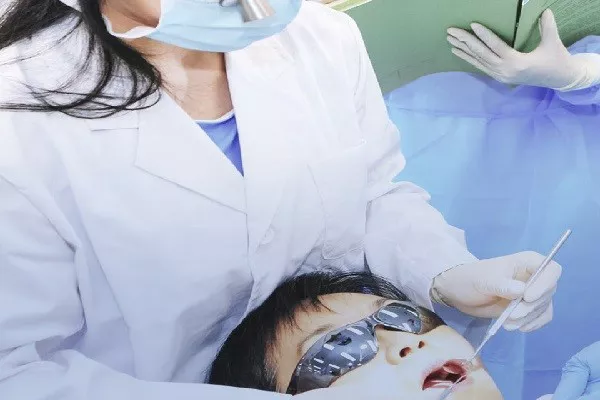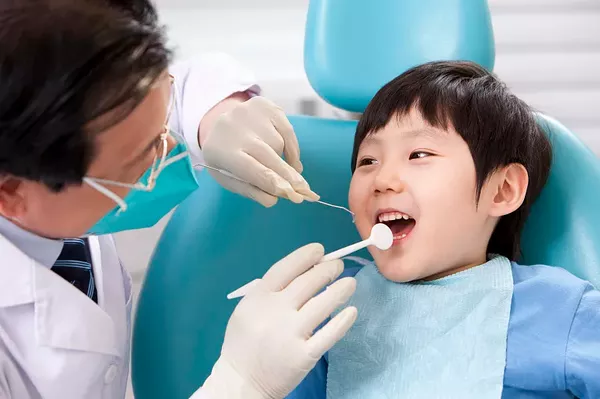Periodontal disease is a common dental problem that affects millions of people worldwide. It starts with the buildup of plaque on the teeth, which leads to inflammation of the gums. If left untreated, it can progress into advanced periodontal disease, which can cause serious damage to the teeth and gums. In this article, we will discuss what advanced periodontal disease looks like, its symptoms, treatment options, and prevention measures.
Symptoms of Advanced Periodontal Disease
Advanced periodontal disease, also known as periodontitis, is a serious condition that affects the gum tissues and bone structure that support the teeth. It typically develops from untreated gingivitis, a milder form of gum disease that causes inflammation of the gums.
Here are some of the common symptoms of advanced periodontal disease:
- Receding gums: As the disease progresses, the gums may begin to pull away from the teeth, causing them to appear longer.
- Loose teeth: The bone and tissue that support the teeth can become damaged, causing the teeth to become loose or shift out of place.
- Bleeding gums: Gums affected by periodontitis may bleed easily, especially during brushing or flossing.
- Bad breath: Persistent bad breath, even after brushing or using mouthwash, can be a sign of advanced periodontal disease.
- Pus discharge: In severe cases, pus may develop at the gum line, indicating an infection.
- Pain when chewing: As the teeth become loose and shift out of place, it can become painful to chew or bite down.
- Changes in bite: Over time, the shifting of teeth can cause changes in the way the upper and lower teeth fit together when biting down.
It’s important to seek treatment for advanced periodontal disease as early as possible to prevent further damage and tooth loss. A dentist or periodontist can provide a proper diagnosis and recommend appropriate treatment options based on the severity of the disease.
Treatment Options for Advanced Periodontal Disease
Advanced periodontal disease, or periodontitis, is a serious condition that requires prompt treatment to prevent further damage to the gums and teeth. There are several treatment options available, depending on the severity of the disease.
Here are some of the most common treatment options for advanced periodontal disease:
- Scaling and Root Planing
This is a non-surgical deep cleaning procedure that removes plaque and tartar from above and below the gum line. The dentist or hygienist will use special tools to remove the buildup of bacteria and infected tissue from the tooth root surfaces. This procedure helps reduce inflammation and promotes healing of the gum tissues.
- Antibiotics
In some cases, antibiotics may be prescribed to control bacterial infection and reduce inflammation. Antibiotics can be taken orally, applied as a topical gel, or inserted directly into gum pockets.
- Periodontal Surgery
In severe cases of advanced periodontal disease, surgery may be required to repair damaged tissues and bone. There are several types of surgeries available, including flap surgery and bone grafts. Flap surgery involves lifting the gum tissue away from the teeth to allow for deep cleaning of the roots and removal of infected tissue. Bone grafts involve adding synthetic or natural bone material to the jawbone to promote bone growth and stabilize teeth.
- Laser Treatment
Laser therapy is a minimally invasive procedure that uses focused beams of light to remove diseased tissue and bacteria from the gums. It can also help stimulate gum tissue regeneration and promote healing.
- Consultation with a Periodontist
If the condition is severe or if previous treatments have been unsuccessful, a referral to a periodontist may be necessary. A periodontist specializes in treating gum disease and can provide more advanced treatment options.
It’s essential to maintain good oral hygiene habits, such as brushing twice daily and flossing, to prevent advanced periodontal disease from developing. Regular dental check-ups can help detect the early signs of gum disease and prevent it from progressing to its advanced stage. If you notice any symptoms of advanced periodontal disease, such as receding gums or loose teeth, seek prompt treatment from a dental professional to prevent further damage.
Prevention Measures for Advanced Periodontal Disease
Preventing advanced periodontal disease is essential to maintaining healthy gums and teeth. Here are some effective prevention measures you can take:
- Brushing: Brushing your teeth twice a day with fluoride toothpaste helps remove plaque and bacteria that can cause gum disease.
- Flossing: Flossing at least once a day helps remove food particles and plaque from between teeth and along the gum line.
- Mouthwash: Using an antimicrobial mouthwash can help control bacteria in the mouth and prevent gum disease.
- Healthy diet: Eating a balanced diet rich in vitamins and minerals, such as calcium and vitamin D, can help keep your gums and teeth healthy and strong.
- Quit smoking: Smoking weakens the immune system and increases the risk of gum disease.
- Regular dental checkups: Professional cleanings and checkups every 6-12 months can help detect early signs of gum disease and prevent it from progressing to its advanced stage.
- Gum massage: Massaging your gums with your fingers or using a rubber tip can help increase blood flow and promote healthy gum tissue.
- Reduce stress: Stress can weaken the immune system and increase inflammation in the body, which can contribute to gum disease. Finding ways to reduce stress, such as meditation or exercise, can help promote overall health.
By incorporating these prevention measures into your daily routine, you can significantly reduce your risk of developing advanced periodontal disease. If you notice any symptoms of gum disease, such as bleeding gums or bad breath, seek prompt treatment from a dental professional to prevent further damage.
Advanced periodontal disease is a severe condition that can lead to tooth loss if left untreated. It’s essential to recognize the symptoms and seek treatment as soon as possible to prevent further damage. Proper oral hygiene and regular dental checkups can help prevent gum disease from developing into its advanced stage. If you notice any symptoms of advanced periodontal disease, make an appointment with your dentist right away to discuss your treatment options.
Related Topics:
































